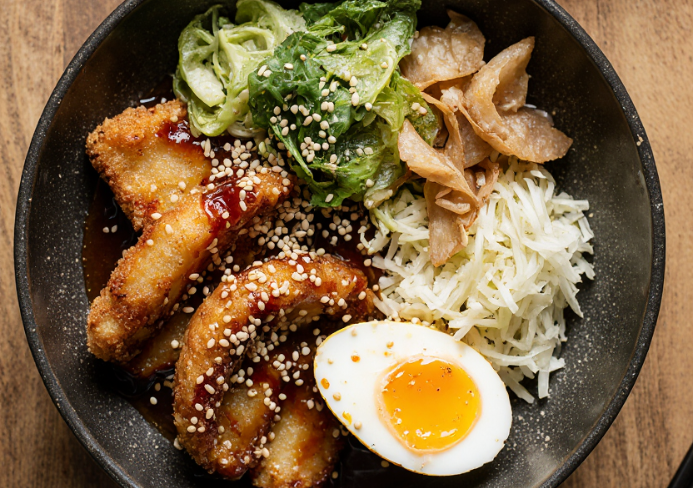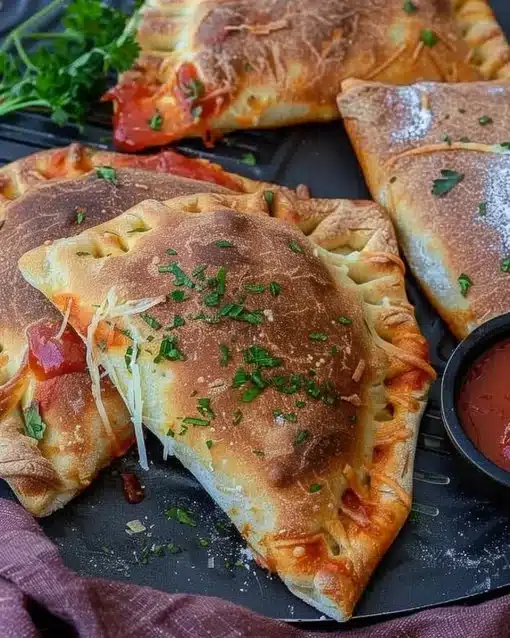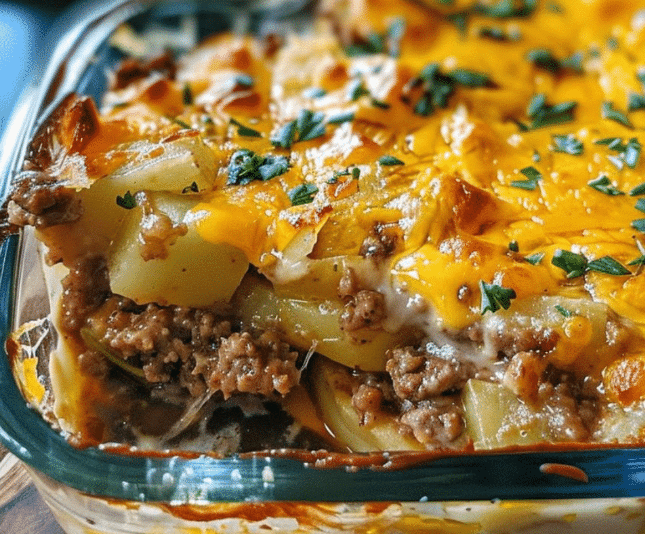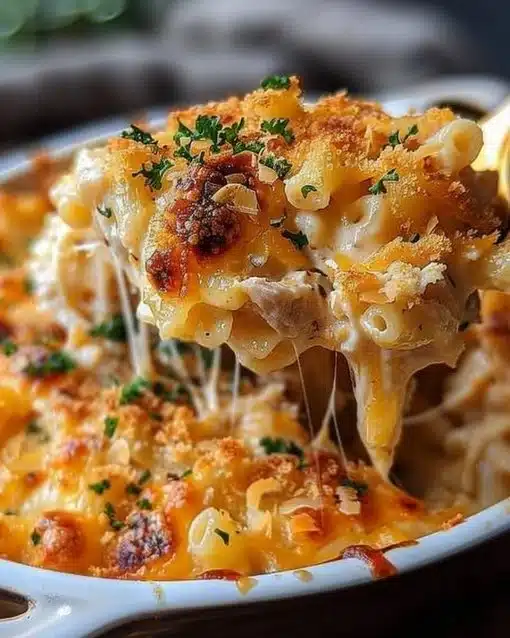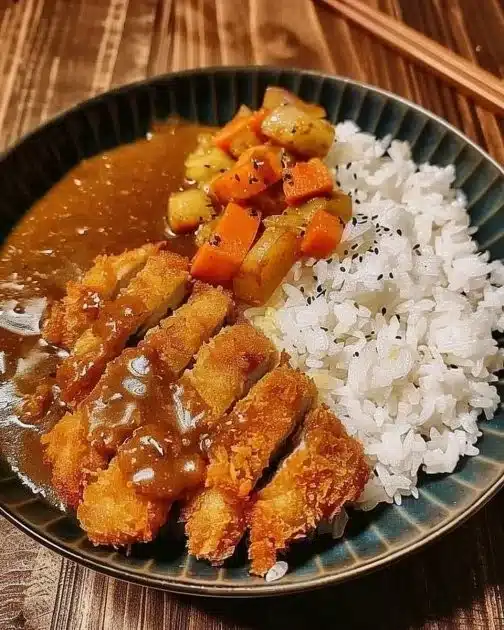Japanese Katsu Bowls with Tonkatsu Sauce
Katsu bowls have become a beloved staple not only in Japan but around the world. These comforting, crispy pork cutlet dishes served over rice are simple yet bursting with flavor. At the heart of the dish lies Tonkatsu, a deep-fried pork loin, and its sweet-savory companion — Tonkatsu sauce. In this guide, you’ll discover everything from the history of this dish to how to make the perfect Japanese Katsu Bowl at home.
Table of Contents
Whether you’re a curious foodie or a home cook ready to explore Japanese comfort food, you’ll find this breakdown both practical and delicious.
What is Tonkatsu?
Tonkatsu is a Japanese-style deep-fried pork cutlet, usually made from pork loin or tenderloin, coated in panko breadcrumbs and fried until golden brown. This dish originated in the late 19th century as a Japanese take on Western-style cutlets and quickly became a national favorite.
The key difference between Tonkatsu and other breaded meats like schnitzel is the use of panko, which gives it a lighter, crispier texture. While pork is traditional, there are also variations like chicken katsu, beef katsu, and even plant-based versions.
To pair with the cutlet is the beloved Tonkatsu sauce — a thick, sweet, and tangy sauce that’s essential for completing the flavor profile. You can learn how to make your own homemade Tonkatsu sauce using simple pantry staples like soy sauce, Worcestershire sauce, sugar, and fruit purée.
Anatomy of a Perfect Japanese Katsu Bowl
A Katsu Bowl — or Katsudon in some variations — is essentially a layered dish, often served in a donburi (deep rice bowl). While presentation may vary slightly, the essential components are consistent:
- Steamed white rice (preferably short-grain Japanese rice)
- Crispy Tonkatsu (pork loin or tenderloin)
- Shredded cabbage for crunch and freshness
- Tonkatsu sauce generously drizzled over the cutlet
- Optional toppings: pickled ginger, boiled egg, sesame seeds, or even scallions
In some areas of Japan, regional twists like Nagoya’s miso katsu offer a different flavor experience by substituting the traditional sauce with a miso-based glaze. For more insights on how this dish is enjoyed throughout Japan, the Japan Centre’s Katsu guide is a great cultural deep dive.
Tonkatsu Sauce: Flavor & Function
The Tonkatsu sauce is more than just a condiment — it’s what ties all the textures and layers together. It’s typically:
- Sweet, tangy, and umami-rich
- Made from Worcestershire sauce, soy sauce, sugar, and fruit purée like apple or prune
- Thick in consistency to coat the pork without making it soggy
You can find store-bought versions, but the flavor of a fresh homemade sauce brings the dish to life. It’s also versatile — great for dipping fries or vegetables too.
Ingredients You’ll Need
To recreate a Japanese Katsu Bowl at home, here’s what you’ll need:
For the Tonkatsu
- 2 pork loin chops (boneless)
- Salt and pepper
- 1/2 cup all-purpose flour
- 1 egg (beaten)
- 1 cup panko breadcrumbs
- Oil for deep frying (preferably vegetable or canola)
For the Bowl
- Cooked white rice
- Shredded cabbage
- Tonkatsu sauce
- Optional: pickled ginger, sesame seeds, boiled egg
For the Tonkatsu Sauce (Homemade)
- 2 tbsp Worcestershire sauce
- 1 tbsp soy sauce
- 1 tbsp ketchup
- 1 tsp sugar
- 1 tsp mirin or rice vinegar
- 1/2 tsp grated apple (optional)
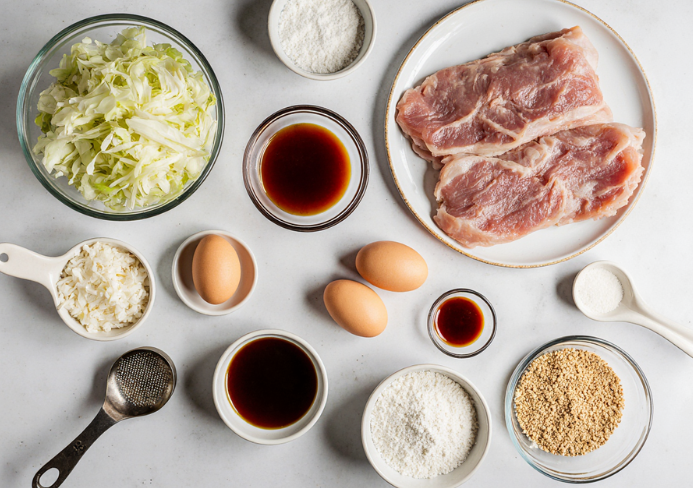
How to Make Japanese Katsu Bowls
Follow these easy steps to assemble your own delicious Katsu Bowls:
- Prep the Pork
- Trim excess fat and tenderize the pork.
- Lightly season with salt and pepper.
- Bread the Pork
- Dredge in flour, dip in beaten egg, and coat with panko.
- Let rest for a few minutes to help the coating stick.
- Fry the Cutlets
- Heat oil to 350°F (175°C) in a deep pan.
- Fry cutlets until golden brown and crispy (3-4 minutes per side).
- Drain on paper towels.
- Cook the Rice & Prepare Toppings
- Use short-grain Japanese rice for authenticity.
- Shred cabbage finely and prepare any desired toppings.
- Assemble the Bowl
- Add rice to the bottom of the bowl.
- Slice Tonkatsu and place on top.
- Drizzle with Tonkatsu sauce.
- Add shredded cabbage and other garnishes.
Tips for the Best Katsu
- Use panko instead of regular breadcrumbs for a crispier texture.
- Double-fry the pork cutlet if you want extra crunch.
- Use a wire rack instead of paper towels to drain excess oil without steaming the crust.
- Don’t over-sauce the cutlet — drizzle just enough to flavor without making it soggy.
Serving Ideas
A full Katsu Bowl meal pairs well with:
- Miso soup
- Pickled vegetables (tsukemono)
- Green tea or cold barley tea (mugicha)
- A light Japanese salad with sesame dressing
Health and Nutrition
While Katsu Bowls are indulgent, you can make them lighter:
- Air-fry or bake the pork instead of deep-frying
- Use leaner cuts like pork tenderloin
- Limit the sauce or opt for a homemade, low-sugar version
A standard pork katsu bowl has:
- Around 700–900 calories
- High protein content
- Moderate fat (depending on frying method)
Common Mistakes to Avoid
- Overcrowding the frying pan — it lowers oil temperature and leads to soggy crusts
- Skipping the resting period after breading
- Over-saucing — the crust should stay crispy
- Using thin pork cuts, which dry out easily
Frequently Asked Questions
What is the difference between Tonkatsu and Chicken Katsu?
Tonkatsu uses pork, while Chicken Katsu uses chicken breast or thigh. Both are breaded and fried similarly.
Can I use store-bought Tonkatsu sauce?
Yes! Brands like Bull-Dog make authentic bottled versions, but homemade adds a fresh flavor.
Is a Katsu Bowl gluten-free?
Not by default, but you can use gluten-free panko, soy sauce, and flour to make a GF version.
What kind of rice works best?
Short-grain Japanese rice is ideal for its stickiness and neutral flavor.
Can I use an air fryer instead of deep frying?
Absolutely. The texture is slightly different, but it’s a healthier alternative.
Japanese Katsu Bowls with Tonkatsu Sauce
- Total Time: 40 mins
- Yield: 2 servings
Description
A classic Japanese comfort dish featuring crispy pork cutlet (tonkatsu) served over steamed rice with shredded cabbage and a rich homemade tonkatsu sauce. Perfect for lunch or dinner with optional garnishes like boiled egg or pickled ginger.
Ingredients
For the Tonkatsu (Pork Cutlet):
- 2 pork loin chops (boneless)
- Salt and pepper
- 1/2 cup all-purpose flour
- 1 egg (beaten)
- 1 cup panko breadcrumbs
- Oil for deep frying (vegetable or canola)
For the Bowl:
- Cooked white rice (short-grain Japanese rice preferred)
- Shredded cabbage
- Tonkatsu sauce
- Optional: pickled ginger, sesame seeds, boiled egg
For Homemade Tonkatsu Sauce:
- 2 tbsp Worcestershire sauce
- 1 tbsp soy sauce
- 1 tbsp ketchup
- 1 tsp sugar
- 1 tsp mirin or rice vinegar
- 1/2 tsp grated apple (optional)
Instructions
- Prep the Pork: Trim and tenderize the pork loin chops. Season with salt and pepper on both sides.
- Bread the Cutlet: Dredge each piece of pork in flour, dip into the beaten egg, and coat thoroughly in panko breadcrumbs.
- Fry the Pork: Heat oil to 350°F (175°C) in a deep frying pan. Fry each cutlet for 3–4 minutes per side until golden brown and crispy. Drain on paper towels or a wire rack.
- Cook Rice & Prepare Toppings: Steam short-grain Japanese rice. Shred fresh cabbage and prepare optional toppings like boiled eggs or pickled ginger.
- Make the Tonkatsu Sauce: In a small bowl, mix Worcestershire sauce, soy sauce, ketchup, sugar, mirin (or vinegar), and optional grated apple until combined.
- Assemble the Bowl: Place steamed rice in a serving bowl. Slice the tonkatsu into strips and place on top. Drizzle with sauce and add shredded cabbage and optional garnishes. Serve immediately.
Notes
For extra crispiness, double fry the cutlets (fry once lightly, then again just before serving). Tonkatsu sauce can be stored in the fridge for up to a week.
- Prep Time: 20 mins
- Cook Time: 20 mins
- Category: Main dish
- Method: Deep frying
- Cuisine: Japanese

